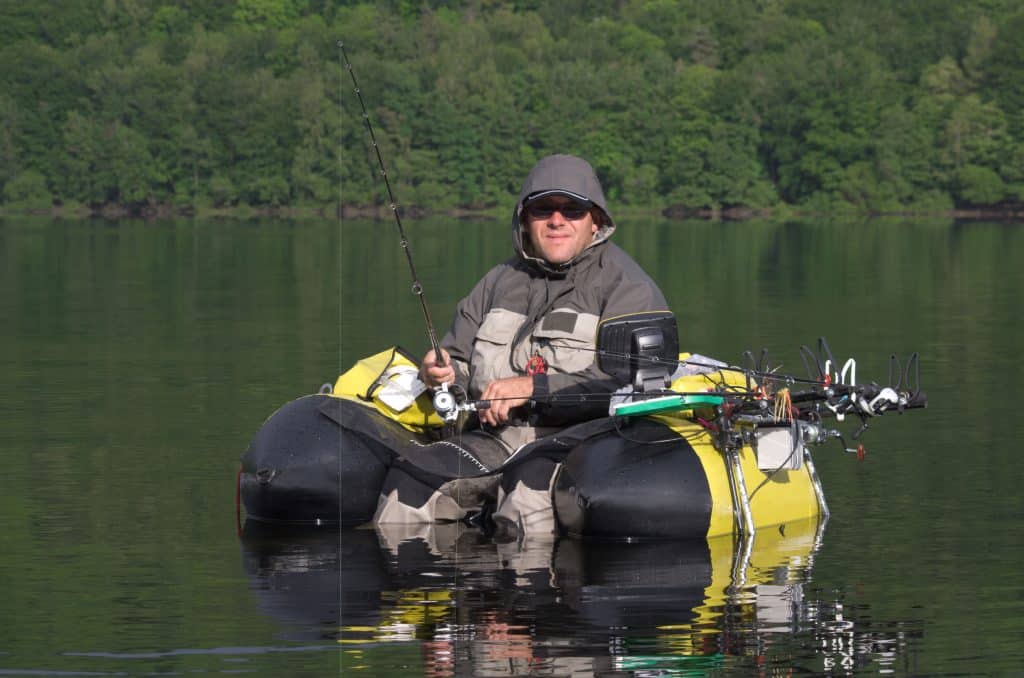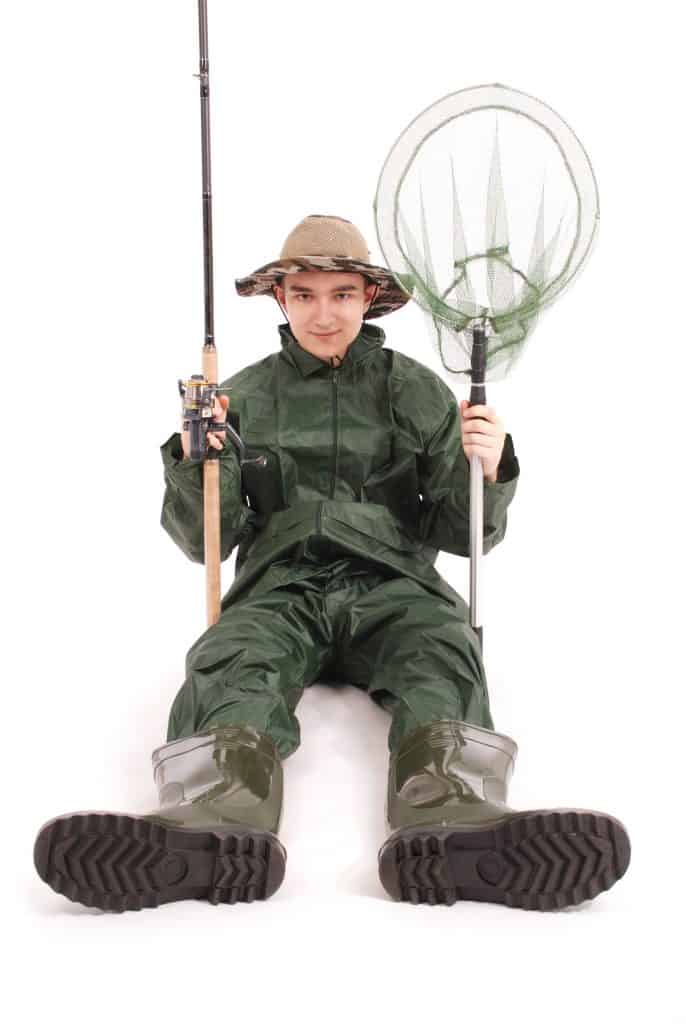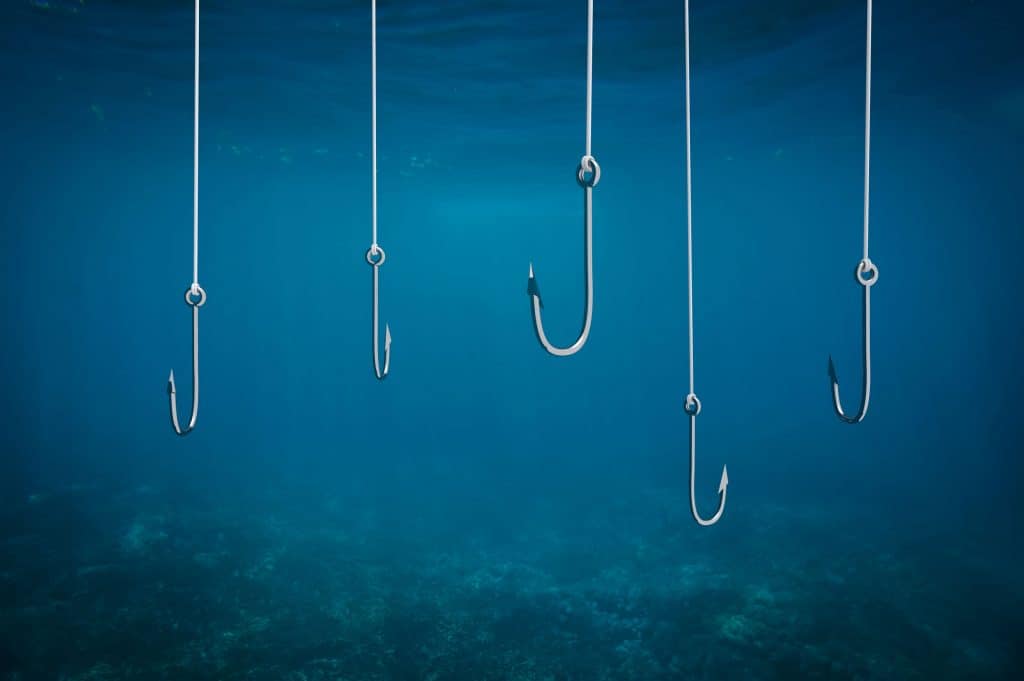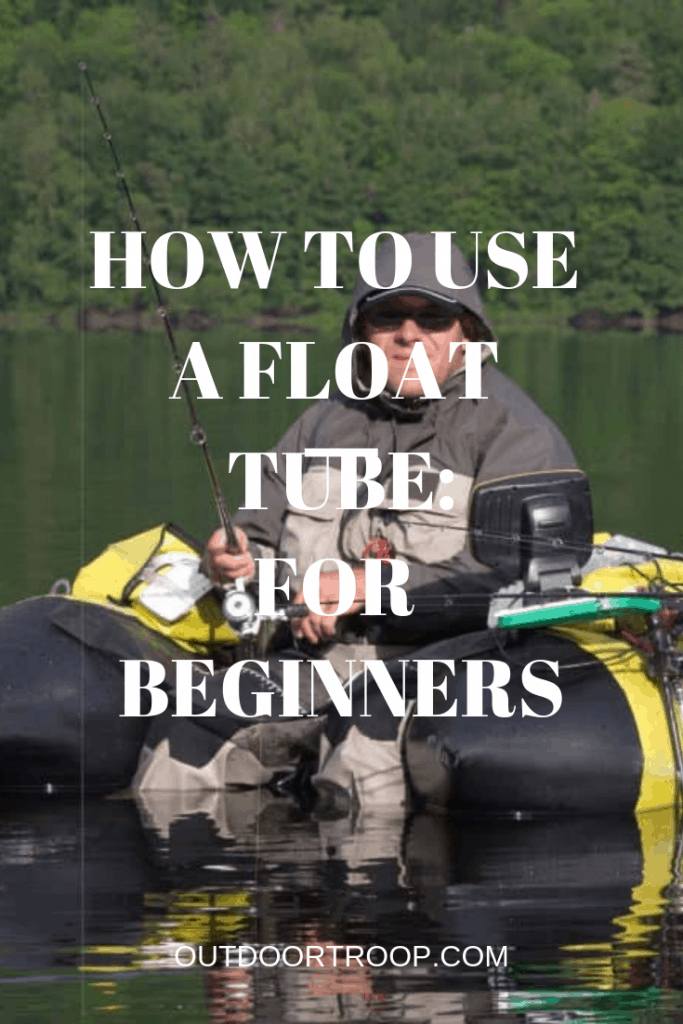
Recently, I have been getting questions about using a float tube for fishing fun. A lot of people are interested but don’t know much about how they work; here is what I found for first-time float tubers!
So how do you use a float tube? There are a few really basic steps to take when you use a float tube. You will want to prepare by knowing how your float works, dress so you can stay warm, practice beforehand, leave your fear onshore and know how to exit the water.
There are so many things to keep in mind when using a float tube. I’m going to tell you all about what you need to keep at the forefront of your mind so that you can have the best time fishing with friends or alone as possible! Whether your concerns are how to dress, when to go, or what to bring I have got you covered.
First Off, What Is Float Tubing?
Float tubing is a form of fishing. Or more so a way to fish or means to fish. Some people fish off of docks, some from a canoe or a kayak. A float tube is a chair-like mechanism that you fish from.
A float tube gives you a chance to be stealthy and virtually undetected by the aquatic life. There are also no boat shadows, motor sounds or vibrations. This offers you a wonderful alternative to sneak up on your catch.
Don’t Forget Your Supplies
Float tubes, although very useful for staying quiet and sneaking up of your big catch of the day, can be kind of hard to work. Once you are out in the water it can take a while to work your way back to shore. Moving your float tube, honestly, is not a very easy task.
You will want to have everything on you that you will need all day. I am not just referencing your fishing supplies. I am talking about sunglasses, to keep your eyes protected. You may want a hat to shield your face and head for sunburn. Speaking of sunburn, you won’t want to forget your sunscreen.
Remember to pack all of the food and water you may need to last you throughout the day so that you do not become dehydrate or become low on energy. Being in this position may make it hard for you to use the energy you need to get back to the shore.
Another random thing you may want to bring but did not think of is ping pong paddles. These can help you paddle and steer in tough situations and can speed up the process of getting you where you want to go!
All in all, make a checklist of all the things you’ll want out with you on the water and go through it before you push off! These were just a few examples of somethings you may want to seriously consider bringing.
Sunscreen and Bug Repellant
We touched on sunscreen a little in the section above but it is seriously so important. When you are on a float tub there are no covers. You can not hide from the sun like you can on some boats.
There will be serious exposure to the sun, especially because fishing is usually a day-long event. Because of this, you need to come prepared with loads of sunscreen that is waterproof. SPF 50 at minimum would be recommended. Apply it multiple times throughout the day.
By doing this you are preventing dangerous things such as skin cancer or simple burns that will can you to have aches and pains on your skins for a period of time.
Bug repellant is another thing you will need to bring! typically floating tubes are used in areas that are bay like. These areas often attract multiple types of mosquitos and other bugs that can cause not only annoying itchy marks but serious illnesses.
Spray yourself every so often and spray the area around you to keep the critters away. There are a few types of bug repellant. Whether you choose the bracelets, spray, lotion or any of the many other options you will be grateful!
What To Wear on the Float Tube

What to wear is really dependant on the area you are floating in and the time of year. Weather all over the world varies throughout the year so it is hard to say you need one specific type of clothing for this occasion.
One thing is for sure, regardless if it is hot or cold, you will NEED a hat and sunglasses. These will keep you safe from sun damage all year long. They will also help you keep glares away so that you will be more able to spot the fish in the water.
If it is warmer weather you can wear a bathing suit, trunks, or shorts along with a t-shirt to stay cool. It is recommended that even in warmer months you wear a long sleeve to protect you from sunburns. It can also be used to help you stay cool by wetting the shirt and wearing it.
In a cold period of the year, layering is encouraged, especially adding a waterproof, or rainproof layers. And in extreme situations, some people even opt-in for a wet suit. This is a completely personal preference.
If a wet suit seems a little foreign try a pair of waders. Waders are one-piece of waterproof pants with connected boots. You do not have to have these but they are an incredible option.
They help you avoid hypothermia, leeches or other bugs that may cause harm to you in the water and a list of other benefits. Consider looking into it. All the pros love them.
Be in Plain Sight
This might seem like a no brainer. But when you are new at something and simply enjoying your experience, sometimes some of the most basics things can slip your mind.
You are going to want to make sure you are always visible. It may seem like you have a small chance of getting hit by a boat or skier or something of the sort but accidents do happen.
Do yourself a favor and make sure you are in an open area, clearly seen by any eye. If you feel that purchasing a colorful tube will make you more visible to the aquatic life maybe opt for wearing bright colors instead.
Tackle – Bring the Good Stuff
When you are on a float tube you will notice pretty quickly that there really is not a ton of space for extra stuff. When you are on a boat there is quite a bit of extra room to have a huge tackle box, loads of hooks, rods, food, you name it.
But when you are posted up on your float tube this will not be the case. Bring with you what you know the fish in your specific area likes.
Make sure it is all organized in a tight fashion beforehand as well. This way you are not going to have to move everything around and try and reorganize it in a small space. That can get messy. Plan ahead for this situation.
Fly and Lures
Depending on the size of the float tube you purchase you should have room for a couple of boxes of fly supplies.
When it comes to bringing the perfect fly and lures, the debate as to what is “perfect” is up in the air. Just like anything else in this world, everyone has their preference.
Keep in mind what type of fish you are after in your specific area and what you feel has worked before and pack accordingly.
Do not waste space of fly and lure you are unsure about. It’s not worth it when you have such a small space.
What Fishing Rod is Best to Bring?
This can be tricky if you plan to float tube in more than one area but are only purchasing one rod.
If you ask some fisherman, they may give you a very specific length rod for you to take float tubing but all around this seems to be a personal opinion.
What it really comes down to is knowing what type species of fish you are after. This is what will really make a difference. Once you know the type of fish in your floating area look up what rod best attracts that species. This way your float tub is not bogged down by an unnecessary number of fishing rods.
Picking a Reel for Your Float Tube
This comes down to a couple of things. One thing to keep in mind is that you do not want to waste your money. This can be a really great or a really poor investment.
One thing we have talked about quite a bit, make sure you use a reel that is known for working well with the specific type of fish you are after.
The other thing to touch on when picking a reel would be to decide between a single action reel and a level wind reel.
A single action reel is generally seen as the best option for float tube fishing. This is something to seriously consider when making your purchase. Single action is seen as offering smooth feed into the water and really awesome line compacity.
When it comes to level wind reel you are offered a little more versatility. Level wind reels work well in a float compacity but all so really well in other fishing capacities. So if you plan to do more then float tube fishing this is something to consider.
What is the Right Hook?

This really comes down to something we have discussed over and over again, the type of fish you are after! If you are after a teeny tiny fish, consider buying a smaller hook. If the type of fish you are after are extremely large then go big or go with a large hook!
Other than that, the most important thing is making sure you buy extremely sharp hooks! The sharper the better. This ensures that your fish won’t swim away after it has been hooked.
How Far Out is Safe?
When it comes to floating, how far from the shore you float away in your float tube is a bigger deal then when you float away in canoe or kayak.
Float tubes are safe, my goal in this section is not to make you think otherwise. But they are harder to maneuver the farther from shore you get. Because of this, it is encouraged that you stay closer to shore then farther.
You will want to be closer to shore if something comes up. You can never really time emergencies but when they do happen you will want to be able to get back to land quickly.
One thing you may think is “there are more fish the farther out I go.” This is true. There are a lot of fish the farther out you go but in populated areas, there will be a good amount of fish even close to shore, for you to catch.
Plan to go to a location that you know will have fish for you to catch regardless of how far out you float.
Watch the Time
You always want to be watching the time and the sky when you are doing outdoor sports. This is especially true when it comes to float-tubing.
Because of the difficulty previously mentioned when it comes to moving your float tube, you will want a good chunk of time to cut out to slow down and get back to shore.
Make sure to set aside a couple of hours of time to close down shop. Get your things together, get to shore, unpack and head home. It may sound like an easy task but water is sometimes unpredictable and it can take a little more will power to move a float tube then it would a kayak or canoe.
Related Questions:
How do I paddle a float tube? Ping pong paddles, or purchase ore locks for inflatable boats. You will then want to purchase waterproof adhesive. Deflate your float tube. Glue the ore locks onto the sides of the front of the float tube. get short length ores and you are off!
What are some fun float tube accessories? Float tubes are a blast by themselves but what about the cool extra add ons you can get. A few things to add are: a mini anchor, swimming fins, a dry bag, and a pair of binoculars.

